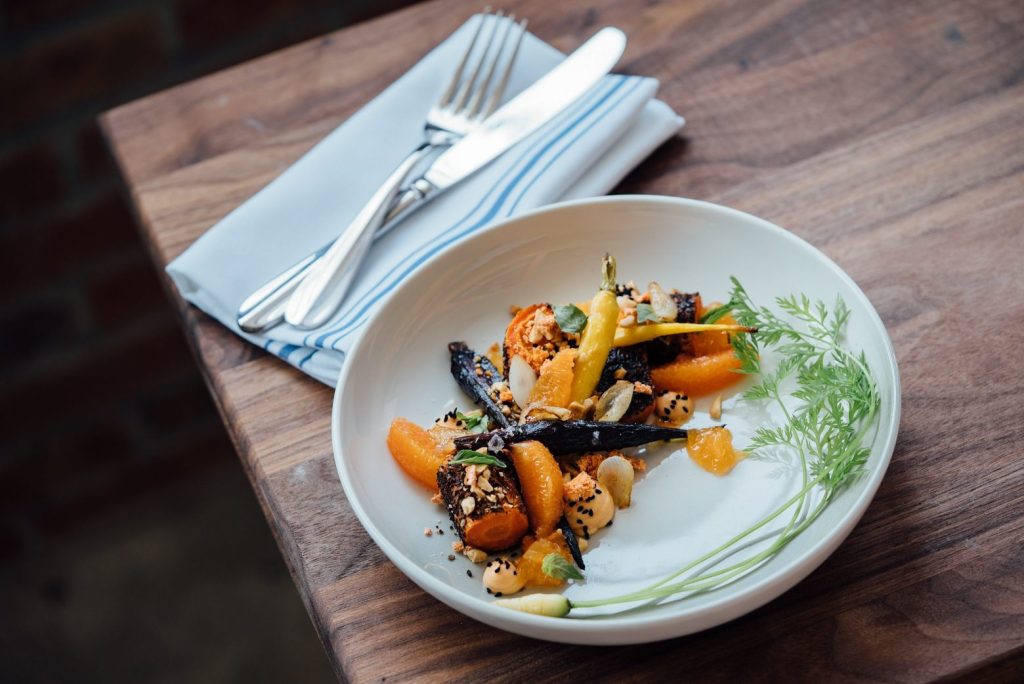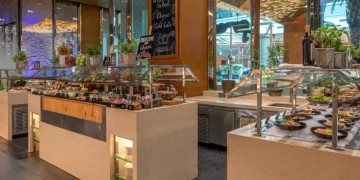In recent years, sustainability has emerged as a crucial pillar not only in the way we live but also in the way we eat. This growing trend is being increasingly embraced by the luxury dining industry, where sustainability no longer means compromising on taste or elegance but instead signifies a deep commitment to environmental and ethical responsibility. High-end restaurants, renowned chefs, and conscious consumers are beginning to see that the pursuit of gastronomic excellence can coexist with the health of our planet.
As global awareness of climate change, resource depletion, and ethical sourcing grows, the culinary world is undergoing a radical transformation. Sustainable luxury dining offers a powerful blend of haute cuisine and eco-consciousness, where each meticulously crafted dish reflects a commitment to protecting the environment, supporting ethical farming, and reducing waste. But how does this translate into the world of gourmet meals, where indulgence and luxury have long been associated with excess and opulence? In this article, we will explore the convergence of sustainability and luxury dining, highlighting key trends, practices, and establishments that are setting a new standard for fine cuisine.
The Growing Trend of Sustainability in High-End Dining
Luxury dining has always been about the finest ingredients, extraordinary craftsmanship, and impeccable service. However, as the global focus on environmental issues intensifies, diners—and chefs alike—are increasingly prioritizing sustainability alongside quality. More than just a passing trend, sustainability in high-end dining reflects a growing recognition that the environmental impact of food production must be considered alongside its flavor and presentation.
Restaurants and chefs are responding to this change in several ways, from sourcing organic and locally grown ingredients to embracing innovative techniques that minimize food waste. The idea is that gourmet dining can—and should—be aligned with practices that preserve and protect natural resources for future generations. The sustainability movement in the luxury food sector is not only about offering plant-based or organic menus but also about building a holistic approach to dining that considers the entire food production system—from farm to table.
For fine-dining establishments, sustainability also means offering diners the opportunity to connect with the food they consume in a deeper way. It’s about making conscious choices that reflect the values of today’s affluent clientele, who are increasingly aware of how their consumption impacts the world around them. Whether it’s supporting fair trade, reducing carbon footprints, or minimizing food waste, sustainable luxury dining is beginning to set the tone for the future of fine cuisine.
Eco-Friendly Restaurants: Top Luxury Dining Establishments That Prioritize Sustainability
Across the globe, several luxury restaurants are taking sustainability to heart, creating a blueprint for the future of high-end dining. These pioneering establishments are demonstrating that sustainability and luxury can go hand-in-hand, offering an immersive dining experience that celebrates both culinary excellence and environmental consciousness.
1. Narisawa (Tokyo, Japan)
One of the world’s most celebrated restaurants, Narisawa is not just a Michelin-starred powerhouse but also a shining example of how sustainable practices can be woven seamlessly into the fabric of fine dining. Chef Yoshihiro Narisawa has built a reputation for his “innovative satoyama cuisine,” which is rooted in the Japanese tradition of honoring the environment and the seasons. The restaurant sources its ingredients locally and sustainably, often directly from farmers and producers who adhere to eco-friendly practices. Narisawa has made sustainability a core part of its ethos, with dishes designed to minimize food waste and create a harmonious relationship with nature.
2. The Ledbury (London, UK)
The Ledbury is a two-Michelin-starred restaurant that prioritizes sustainable sourcing while delivering an extraordinary dining experience. Chef Brett Graham works with local farms and ethical suppliers to ensure that the ingredients used in his dishes are of the highest quality and are ethically produced. The Ledbury places a strong emphasis on seasonality, using ingredients that are in peak condition and grown without unnecessary chemicals or pesticides. This dedication to sustainability extends to waste reduction efforts, with the restaurant utilizing every part of the ingredients to minimize food waste.
3. Eleven Madison Park (New York, USA)
Eleven Madison Park, led by Chef Daniel Humm, made headlines when it transitioned to a fully plant-based menu in 2021. This bold move was part of the restaurant’s broader commitment to sustainability and reducing its environmental impact. Humm and his team have worked hard to cultivate relationships with local, sustainable farmers and producers, focusing on plant-based dishes that are both innovative and delicious. The decision to go plant-based has significantly reduced the restaurant’s carbon footprint, setting an example for others in the fine dining world to follow.
4. Fäviken (Järpen, Sweden) (Now closed, but still influential)
Fäviken, under the guidance of Chef Magnus Nilsson, was a beacon of sustainable fine dining before it closed in 2019. Located in the Swedish wilderness, Fäviken relied heavily on local ingredients, wild game, and produce from its own farm. The restaurant was known for its commitment to sustainable practices, including reducing food waste, using renewable energy, and cultivating a deep connection with the land. Though Fäviken has closed, its impact on the sustainable dining movement is undeniable.

Sourcing Ingredients: How the World’s Best Chefs Find the Freshest, Most Sustainable Ingredients
Sourcing ingredients sustainably is at the heart of sustainable luxury dining. The world’s best chefs go to great lengths to ensure that the ingredients they use not only meet the highest culinary standards but also align with sustainable and ethical sourcing practices.
Local and Seasonal Sourcing
One of the most effective ways high-end chefs ensure sustainability is by sourcing ingredients locally. This not only reduces the carbon footprint associated with long-distance transportation but also ensures that the ingredients are fresher and more flavorful. Local sourcing also supports regional farmers and producers, fostering a stronger relationship between chefs and their suppliers. Many top chefs make it a priority to work with small, artisanal farms that practice sustainable agriculture and avoid harmful chemicals.
Organic and Regenerative Farming
Organic farming practices are a key component of sustainable sourcing. These methods avoid synthetic pesticides and fertilizers, using natural alternatives to promote healthy soil and biodiversity. Beyond organic, some chefs and producers are turning to regenerative agriculture—a method that focuses on restoring soil health, capturing carbon, and fostering biodiversity. Regenerative farming is seen as a more holistic and environmentally responsible approach to food production.
Ocean-to-Table Practices
Sustainable seafood sourcing is another critical aspect of sustainable luxury dining. Many top restaurants prioritize sourcing fish and shellfish from sustainable fisheries that avoid overfishing and use eco-friendly methods. This includes avoiding species that are endangered or overexploited and working with suppliers who follow strict environmental standards.
The Role of Luxury Farms and Suppliers: Focusing on Ethical and Environmentally Responsible Producers
Behind every great dish is a network of farmers, fishermen, and food artisans who are dedicated to providing the highest quality ingredients. For sustainable luxury dining, it’s essential to forge relationships with producers who are committed to environmental stewardship and ethical practices.
Ethical Farming Practices
Luxury farms and suppliers are focusing on cultivating ingredients that prioritize animal welfare, soil health, and environmental sustainability. Many fine dining establishments now work exclusively with producers who uphold high standards in ethical farming, including free-range livestock, cruelty-free practices, and non-GMO crops. Additionally, some farms are working towards certifications such as Fair Trade, Rainforest Alliance, and Demeter (biodynamic farming), which ensure that the production methods meet rigorous environmental and social standards.
Waste Reduction and Circular Economy
Some luxury farms are adopting circular economy principles, where waste is minimized, and resources are reused. For example, food scraps from farming operations might be composted to enrich the soil, while energy from farm operations might be derived from renewable sources. These efforts help reduce the environmental impact of food production while maintaining the integrity and quality of the ingredients.
Sustainable Practices on the Plate: How Fine Dining Is Changing Its Approach to Luxury Ingredients
The luxury dining industry is transforming the way it approaches traditional luxury ingredients. From foie gras and caviar to truffles and wagyu beef, fine dining has long been associated with indulgent and sometimes unsustainable ingredients. However, the growing focus on sustainability is encouraging chefs to rethink these luxury items and replace them with more ethically and environmentally responsible alternatives.
Plant-Based and Alternative Proteins
In line with the rising popularity of plant-based diets, many fine dining establishments are shifting their focus to plant-based proteins and sustainable alternatives to traditional luxury items. This includes using plant-based substitutes for foie gras and caviar, creating sophisticated dishes that are not only delicious but also environmentally conscious.
Reimagining Luxury Ingredients
Chefs are also reimagining what constitutes a “luxury” ingredient. For example, rare and exotic ingredients that contribute to deforestation or overfishing are being replaced by locally sourced, seasonal alternatives. Wild plants, foraged ingredients, and sustainable seafood are emerging as new culinary luxuries. As chefs become more inventive, they are finding new ways to create dishes that satisfy both the desire for opulence and the need for environmental responsibility.
Conclusion: Can Sustainable Luxury Dining Set the Standard for the Future of Fine Cuisine?
Sustainable luxury dining is not a passing trend but a fundamental shift in the way we think about food. As environmental and ethical concerns become more pressing, the fine dining world is adapting to meet the demands of a new generation of consumers who want to enjoy gourmet meals without compromising their values. With the growing adoption of sustainable practices by top chefs and restaurants, the future of luxury cuisine is poised to be more thoughtful, conscious, and innovative.
The question remains: can sustainable luxury dining set the standard for the future of fine cuisine? Given the industry’s willingness to evolve and the increasing consumer demand for sustainability, it’s clear that the answer is yes. As more chefs and restaurants embrace sustainability as a core value, luxury dining can become a force for positive change, helping to shape a future where indulgence and environmental responsibility go hand in hand.
















































